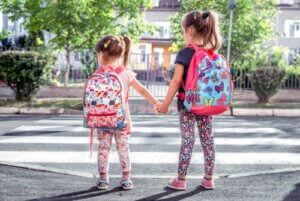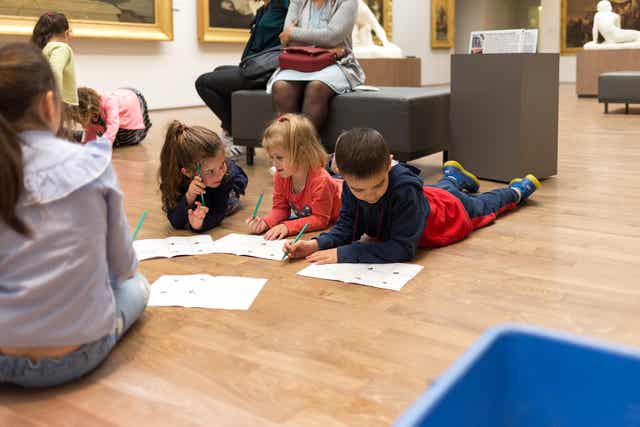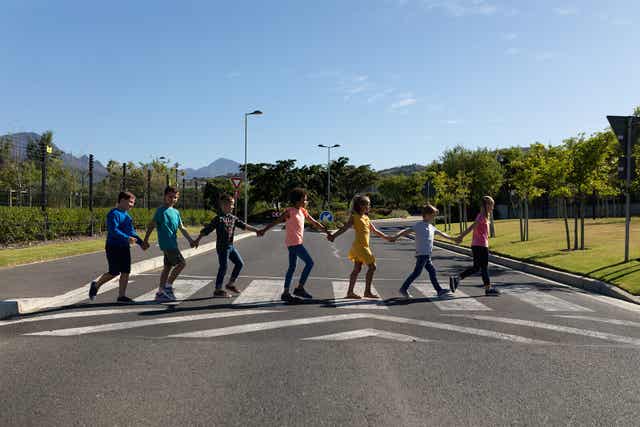Crossover Learning: What Is It?


Written and verified by the pedagogue and trainer María Matilde
Could a student learn art history by visiting a museum? Could kids recognize some species of plants on a field trip? Can math and statistics help teens plan social projects? According to crossover learning, the answer to all of these questions is “yes”:
Mainly, this is because all the questions focus on the basis of crossover learning, which means connecting what kids learn in school with situations that are informal, enjoyable, and attractive. That way, truly meaningful education takes place.

Crossover learning
This is a method that aims to unite formal and informal education environments. So, crossover learning attempts to connect academic content and everyday learning. Therefore, it looks to link school work with experiences outside of school.
The Sharples 2015 report talks about crossover learning as an alternative learning environment outside the classroom. It’s a study from the Institute of Educational Technology of the Open University of the United Kingdom about crossover learning. In it, researchers explored new forms of teaching that connect the classroom with everyday learning.
The report states that “Experiences from everyday life can enrich learning in schools and universities can be enriched; Adding questions and knowledge from the classroom can deepen informal learning.”
As the name suggests, it crosses over between different learning contexts. The report states, “these connections work in both directions.” In other words, both academic and daily learning are better when they occur together.
Crossover learning to motivate and spark interest in students
From a motivational point of view, crossover learning is an interesting teaching method for teachers. Linking curricular material with what the students like is a way of awakening their attention and interest in learning.
Kids learn certain subjects better if they’re taken outside of the classroom. As crossover learning suggests, many school subjects could be more fun if we link them to something practical.
So, there are daily experiences that, in a crossover learning context, are considered learning opportunities. For example, these include field trips to nature, and visits to museums, theaters, or exhibitions.
In all of these situations, students can interpret everyday realities that are more fun for them, in light of what they learn in school.
Crossover learning and new technologies
In this current age, new technologies have changed the way we teach and learn. Thanks to them, many learning options have been developed and diversified, both in more formal and informal contexts.
Both inside and outside the classroom, technology plays a key role. The new virtual environments, teaching platforms, and online education have become key tools to enable and improve education.

So, it makes much more sense for crossover learning to use new technologies to try to guarantee a more comprehensive, complex, and lasting education.
The need to connect knowledge with formal and informal educational contexts
In addition to the need for formal and institutionalized education, you also need informal learning. And this happens more naturally anywhere, anytime. What’s more, for many people, it’s a more fun way to learn.
In general, informal learning is more closely related to the environment, experiences, and how people live. Most of them respond to intrinsic motivations, tastes, and learners’ specific needs. Also, they’re linked to various learning goals.
In today’s society, it’s important to use both formal and informal learning in education. Also, true learning uses both academic and everyday knowledge.
Finally, it’s very important that what happens inside the classroom can intersect with what happens outside of it, in daily life and vice versa.
Could a student learn art history by visiting a museum? Could kids recognize some species of plants on a field trip? Can math and statistics help teens plan social projects? According to crossover learning, the answer to all of these questions is “yes”:
Mainly, this is because all the questions focus on the basis of crossover learning, which means connecting what kids learn in school with situations that are informal, enjoyable, and attractive. That way, truly meaningful education takes place.

Crossover learning
This is a method that aims to unite formal and informal education environments. So, crossover learning attempts to connect academic content and everyday learning. Therefore, it looks to link school work with experiences outside of school.
The Sharples 2015 report talks about crossover learning as an alternative learning environment outside the classroom. It’s a study from the Institute of Educational Technology of the Open University of the United Kingdom about crossover learning. In it, researchers explored new forms of teaching that connect the classroom with everyday learning.
The report states that “Experiences from everyday life can enrich learning in schools and universities can be enriched; Adding questions and knowledge from the classroom can deepen informal learning.”
As the name suggests, it crosses over between different learning contexts. The report states, “these connections work in both directions.” In other words, both academic and daily learning are better when they occur together.
Crossover learning to motivate and spark interest in students
From a motivational point of view, crossover learning is an interesting teaching method for teachers. Linking curricular material with what the students like is a way of awakening their attention and interest in learning.
Kids learn certain subjects better if they’re taken outside of the classroom. As crossover learning suggests, many school subjects could be more fun if we link them to something practical.
So, there are daily experiences that, in a crossover learning context, are considered learning opportunities. For example, these include field trips to nature, and visits to museums, theaters, or exhibitions.
In all of these situations, students can interpret everyday realities that are more fun for them, in light of what they learn in school.
Crossover learning and new technologies
In this current age, new technologies have changed the way we teach and learn. Thanks to them, many learning options have been developed and diversified, both in more formal and informal contexts.
Both inside and outside the classroom, technology plays a key role. The new virtual environments, teaching platforms, and online education have become key tools to enable and improve education.

So, it makes much more sense for crossover learning to use new technologies to try to guarantee a more comprehensive, complex, and lasting education.
The need to connect knowledge with formal and informal educational contexts
In addition to the need for formal and institutionalized education, you also need informal learning. And this happens more naturally anywhere, anytime. What’s more, for many people, it’s a more fun way to learn.
In general, informal learning is more closely related to the environment, experiences, and how people live. Most of them respond to intrinsic motivations, tastes, and learners’ specific needs. Also, they’re linked to various learning goals.
In today’s society, it’s important to use both formal and informal learning in education. Also, true learning uses both academic and everyday knowledge.
Finally, it’s very important that what happens inside the classroom can intersect with what happens outside of it, in daily life and vice versa.
All cited sources were thoroughly reviewed by our team to ensure their quality, reliability, currency, and validity. The bibliography of this article was considered reliable and of academic or scientific accuracy.
- Sharples, Mike; Adams, Anne; Alozie, Nonye [et al.] (2015). “Innovating Pedagogy 2015: exploring new forms of teaching, learning and assessment, to guide educators and policy makers”. Open University Innovation Report 4. Milton Keynes: The Open University. Recuperado de https://iet.open.ac.uk/file/innovating_pedagogy_2015.pdf
- Pereira, S., Fillol, J. y Moura, P. (2019). El aprendizaje de los jóvenes con medios digitales fuera de la escuela: De lo informal a lo formal. Comunicar: Revista Científica de Comunicación y Educación, 27(58), pp. 41-50.
- Breuer, H., Baloian, N. y Konow, R. (2007). Integración móvil de aprendizaje formal e informal. In Proceedings of the Interacción 2007 workshop. Zaragoza, Spain. Retrieved from http://www. aipo. es/articulos/1/12437 (v2). pdf.
- Fernández García, C. M. y Rodríguez Menéndez, M. D. C. (2005). Educación formal, no formal e informal en el Espacio Europeo: nuevas exigencias para los procesos de formación en educación. Aula Abierta, 85. Recuperado de http://digibuo.uniovi.es/dspace/bitstream/10651/26947/1/AulaAbierta.2005.85.45-56.pdf
- Ballineas, A. N. M. (2011). La familia y el museo como sistemas creativos, propicios para el aprendizaje informal (Doctoral dissertation, Universidad Autónoma de Madrid).
This text is provided for informational purposes only and does not replace consultation with a professional. If in doubt, consult your specialist.








